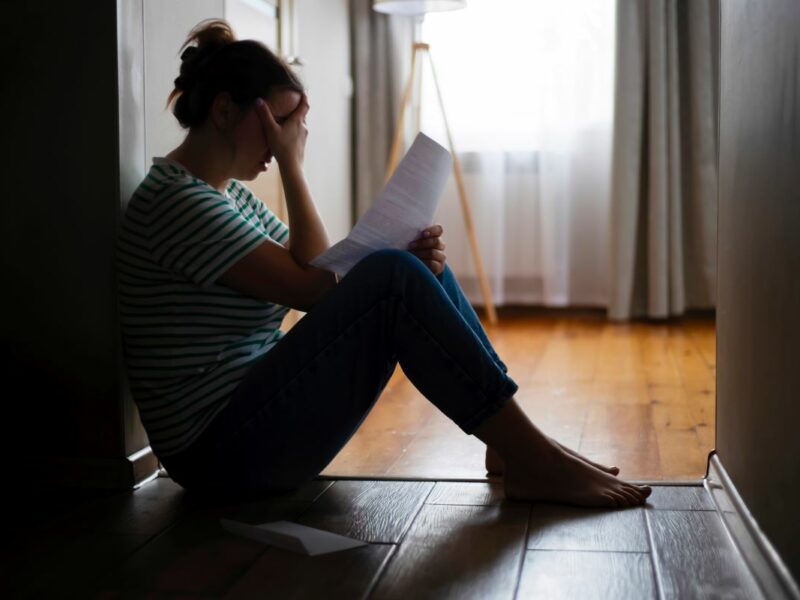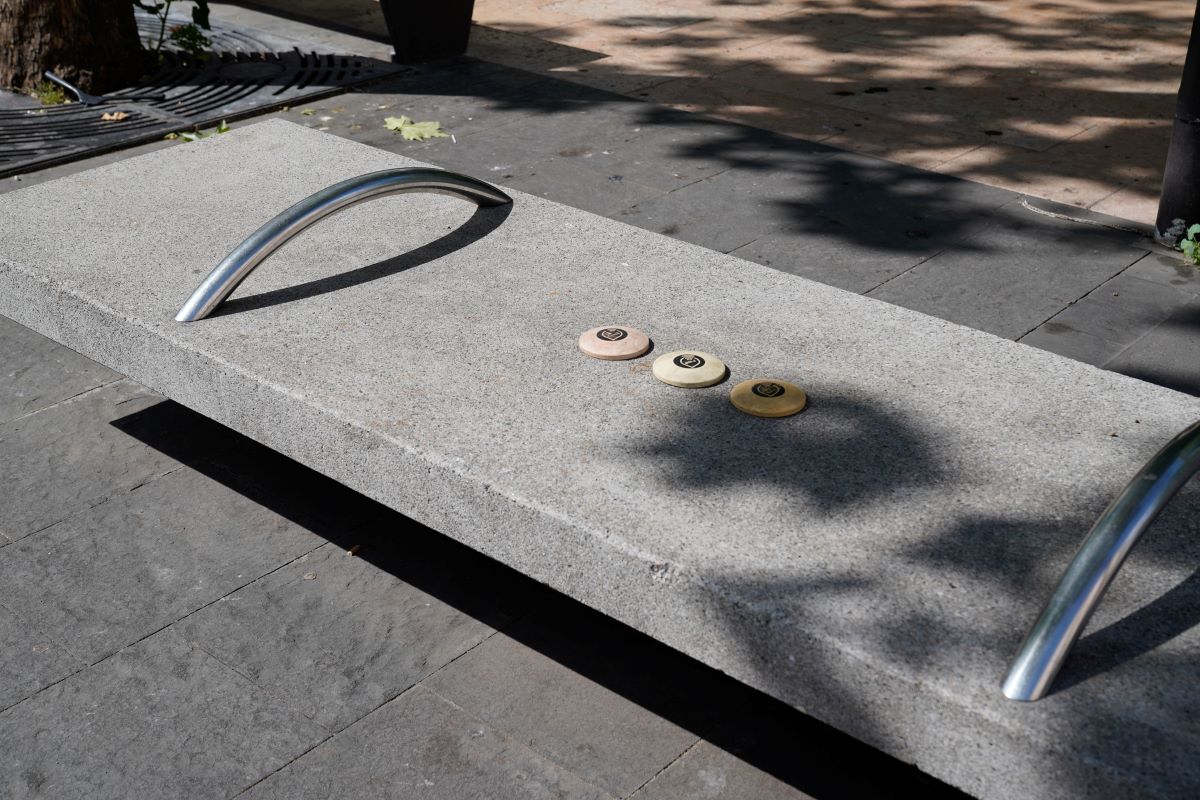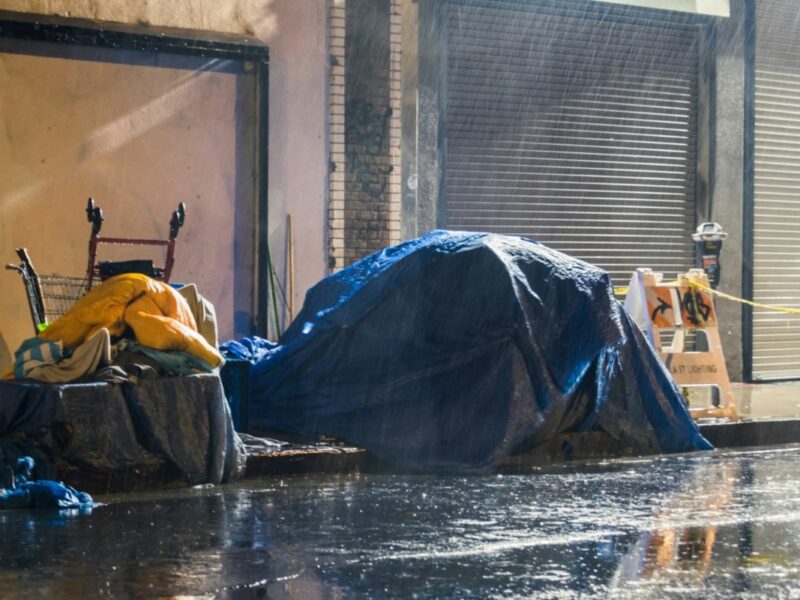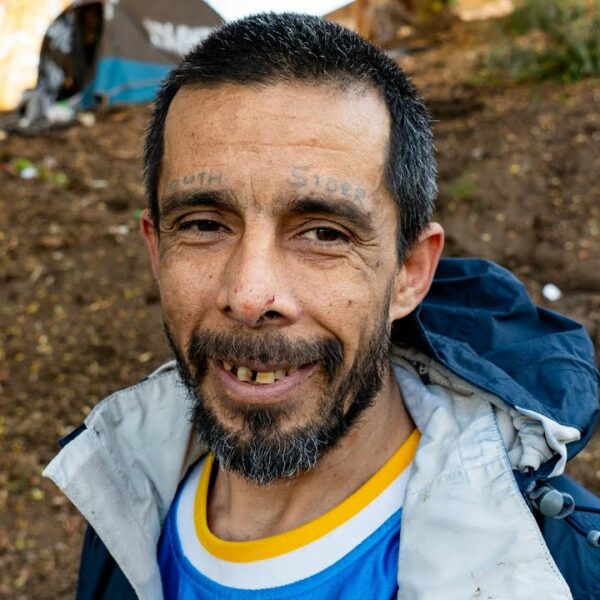Hostile Architecture Prevents Homeless People from Resting, Which Can Prove Deadly During Oppressive Summer Heat
When it comes to scorching summers, 2023 has sparked many heated debates. According to Scientific American, July was the hottest month in history. To be clear, the magazine was not just denoting recent history or even recorded history, but all the history of all the heatwaves dating back more than 100,000 years.
As a result of global warming and climate change, city sidewalks in the United States are on fire, literally and figuratively.
Several Arizona residents who fell on the concrete in Maricopa County emerged with life-threatening burns because the asphalt in that region reached unfathomably high temperatures of approximately 180 degrees Fahrenheit. Meanwhile, in California, the pavement at Mayor Todd Gloria’s controversial Safe Sleeping Site packed a 140-degree punch felt by the 19 unsheltered residents sprawled out across the black tar in tents with no shade.
On Twitter, KUSI News writes, “Mayor Gloria’s office said there is a breeze, so it isn’t too bad.”
The Urban Heat Island Effect Hits the Homeless Community Hard Each Year
No matter where the unhoused population resides – be it a roadside tent, a “safe” sleeping site, a vehicle, or even a pallet shelter village – they are constantly in danger of being burned. Recent examples include pallet shelters going up in flames and unsheltered homeless people hospitalized for contact burns when attempting to sleep on hot surfaces outside.
Some of this results from our planet growing ever hotter by the minute. Other dangers are posed by the architecture in cities.
When towering skyscrapers are built over heat-attracting asphalt roads, the result is something like a funnel that traps heat, making cities significantly hotter than suburbs and rural towns. All of this puts the urban-dwelling homeless population at risk.
All City Architecture Fosters the Urban Heat Island Effect, but Some City Architecture Also Fosters a Culture of Hatred Against Homeless People. This is called Hostile Architecture.
Catching a break from the exasperating summer heat is daunting for people suffering under the endless weight of homelessness. These individuals are likely to be cited or even arrested for simply standing, sitting, sleeping, or existing in a public space.
Plenty of laws on the books make it possible to lock homeless people up simply for the alleged “crime” of trying to survive. That threat is just one of many in the blazing summer heat.
Suppose a person enduring homelessness manages to find a quiet, shady place to take a nap or stop and rest. Even then, due to the prospect of hostile architecture, they cannot relax in peace.
As a housed person, you might not have noticed this. However, bus stops and benches are often built with metal bars running perpendicular across them, effectively splitting the sitting area into individual seats. This is not so you have a hard metal place to put your arm while searching for your TransPass, as you might have initially suspected. That bar is an example of hostile architecture. It was put there so homeless people can’t lie down.
Examples of Hostile Architecture Abound in Cities All Across the Country
It might sound unfathomably cruel, but city planners design the streets to make it difficult, sometimes impossible, for homeless people to stop, rest, nap, or even relax. Examples of hostile architecture that you might have seen without recognizing include:
- Spikes – These might be positioned on corners, over sidewalks, or under bridges to deter passersby from copping a squat.
- Bars – These are used to separate benches or to block off street corners to deter loitering, congregating, and sleeping.
- Boulders and stones – While these natural elements blend in with the scenery, boulders and stones are often strategically placed to make city sidewalks rocky and uncomfortable to sit or sleep on.
- Awkwardly shaped or absent furniture – If you notice a bench that is slanted rather than straight, a grate that is raised rather than flat, or an establishment that takes its chairs out only on an as-needed basis, these, too, are subtle examples of hostile architecture that usually go unnoticed despite being in plain sight.
Summers Can be Deadly for Homeless People with no Place to Rest
About 50% of the 1,500 annual heat fatalities involve members of the unhoused community.
Imagine being so hot you are in danger of dying. Envision a dizzying feeling sweeping over you as you walk aimlessly from one corner to the next. Your intended destination isn’t even a location. It is just a feeling – one of peace, quiet, calm, collection.
Now try to imagine what it would feel like if an entire cityscape was designed to deter you from ever getting the rest your body needs to simply survive.
Hostile architecture further proves that we intentionally construct an antagonistic environment for our neighbors without walls.
Talk To Your Legislators About Making the Right to Housing Part of the Newly Drafted Climate Legislation
The world is growing hotter and harsher by the minute, and it’s high time we head back to the drawing board. From how we build our city streets to how we draft our legislation, we continue to alienate people rather than house them. Contact your representatives and demand they make a legislative change. The people and the planet depend on it.












